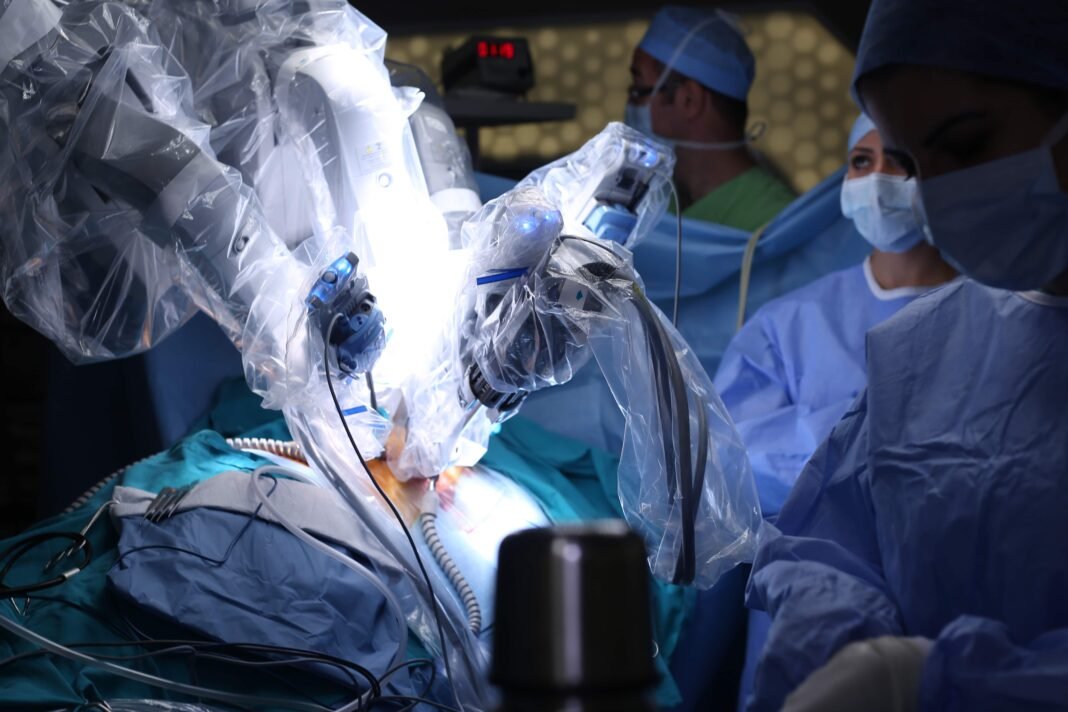In upcoming robotic technology is reshaping the landscape of liver transplants, introducing new possibilities and challenges. The emergence of robotic-assisted liver transplantation (RALDT) marks a significant stride in the realm of surgical innovation, offering potential benefits for patients and surgeons alike.
Traditionally, liver transplant surgeries involve a large incision, resulting in extended recovery times and increased postoperative complications. Robotic surgery aims to address these issues by providing a minimally invasive alternative. The procedure involves the use of robotic arms controlled by a surgeon from a console, allowing for precise movements and enhanced visualization.
One of the primary advantages of robotic liver transplant is the potential for reduced blood loss during surgery. The robotic system provides a three-dimensional, high-definition view of the surgical field, enabling surgeons to navigate complex anatomical structures with greater accuracy. This increased precision can contribute to shorter operative times, minimizing the duration of anesthesia and overall stress on the patient.
Furthermore, the minimally invasive nature of robotic liver transplant can result in smaller incisions, leading to decreased pain and a quicker recovery period for recipients. Shorter hospital stays and a faster return to daily activities are significant considerations, particularly in the context of organ transplantation where recovery is often challenging.
However, the adoption of robotic liver transplant is not without its considerations and challenges. The cost associated with acquiring and maintaining robotic surgical systems remains a substantial factor. Hospitals and healthcare institutions must weigh the potential benefits against the financial investment required to integrate this technology into their surgical practices.
All About Robotic Liver Transplants
Moreover, the expertise required to perform robotic liver transplants is specialized and demands extensive training for surgeons. As this technology is relatively new in the field of liver transplantation, ongoing research and development are essential to refine techniques and ensure optimal patient outcomes.
The decision to undergo a robotic liver transplant should be a collaborative one, involving a comprehensive evaluation of the patient’s specific medical condition, the surgeon’s proficiency with robotic technology, and the overall infrastructure and resources available at the healthcare institution.
Over all, robotic liver transplant represents a transformative approach to traditional surgical methods, promising enhanced precision and quicker recovery times for patients. While the technology is advancing rapidly, its widespread adoption requires careful consideration of the associated costs, surgeon expertise, and ongoing advancements in the field. As the medical community continues to explore the frontiers of robotic surgery, the prospect of robotic liver transplants opens up new avenues for improving patient care and outcomes.
Despite the potential advantages of robotic liver transplants, the technology is still in the early stages of integration into clinical practice. Clinical trials and long-term studies are necessary to establish the safety, efficacy, and overall impact of robotic-assisted procedures on patient outcomes. This thorough evaluation will contribute to refining protocols, addressing any unforeseen complications, and ensuring that the benefits of robotic liver transplants are consistently realized across diverse patient populations.
Additionally, the ethical considerations surrounding the accessibility of robotic surgery must be acknowledged. As this technology is resource-intensive and may not be readily available in all healthcare settings, there is a risk of creating disparities in access to advanced surgical options. Striking a balance between promoting innovation and maintaining equitable healthcare delivery is crucial for the responsible and ethical integration of robotic liver transplantation into mainstream medical practices.
Also, the introduction of robotic technology in liver transplantation is a promising advancement that holds the potential to revolutionize surgical procedures and improve patient outcomes. However, careful navigation of the associated challenges, ongoing research, and a commitment to ethical healthcare practices are imperative to ensure that the benefits of this cutting-edge technology are extended inclusively and sustainably within the medical community.




